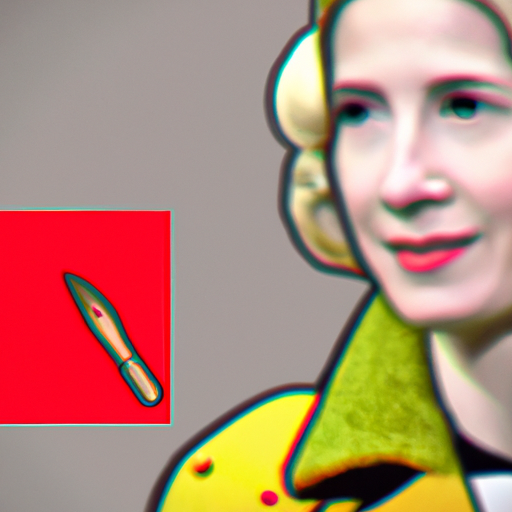
-
Table of Contents
Navigating Copyright in Graphic Design: Best Practices

Graphic design is a creative field that relies heavily on visual elements to communicate messages and evoke emotions. However, in this digital age, it is crucial for graphic designers to understand and navigate the complex world of copyright to protect their work and avoid legal issues. In this article, we will explore the best practices for navigating copyright in graphic design, including understanding copyright basics, obtaining proper licenses, and avoiding infringement. By following these guidelines, graphic designers can ensure that their work is protected and they can continue to create with confidence.
Understanding Copyright Basics
Before delving into the best practices, it is essential to have a solid understanding of copyright basics. Copyright is a legal protection that grants exclusive rights to the creator of an original work, such as a graphic design, to control how it is used and distributed. It applies to both physical and digital creations and is automatically granted to the creator upon the creation of the work.
Copyright protection gives the creator the right to reproduce, distribute, display, and perform their work, as well as create derivative works based on it. These rights are exclusive, meaning that others cannot use the work without the creator’s permission, unless it falls under certain exceptions or fair use.
It is important to note that copyright protection does not last indefinitely. In most countries, including the United States, copyright protection lasts for the creator’s lifetime plus an additional 70 years. After this period, the work enters the public domain and can be freely used by anyone.
Obtaining Proper Licenses
One of the best ways to navigate copyright in graphic design is to obtain proper licenses for the materials you use in your work. Licenses grant you permission to use copyrighted materials legally and can help protect you from potential infringement claims.
There are various types of licenses available, each with its own terms and conditions. Some common types of licenses include:
- Royalty-Free License: This type of license allows you to use the copyrighted material for an unlimited time and in multiple projects, usually for a one-time fee. However, it does not grant you exclusive rights, meaning that others can also use the material.
- Extended License: An extended license provides additional rights beyond those granted by a standard license. It may allow you to use the material in more extensive ways, such as for commercial purposes or in merchandise.
- Creative Commons License: Creative Commons licenses offer a range of permissions that allow creators to share their work with specific conditions. These licenses often require attribution or restrict commercial use.
When using stock images, fonts, or other design resources, it is crucial to carefully read and understand the terms of the license. Some licenses may have restrictions on how the material can be used, such as prohibiting its use in certain industries or for offensive purposes. Failing to comply with the license terms can result in legal consequences, so it is essential to obtain the appropriate licenses for your design projects.
Avoiding Infringement
Avoiding copyright infringement is a critical aspect of navigating copyright in graphic design. Infringement occurs when someone uses copyrighted material without permission or in a way that exceeds the scope of the license. To avoid infringement, consider the following best practices:
- Create Original Work: The best way to avoid infringement is to create original work. By developing your unique style and ideas, you can ensure that your designs are not derivative of someone else’s copyrighted material.
- Conduct Thorough Research: Before using any material in your designs, conduct thorough research to ensure that it is not copyrighted or that you have the necessary licenses to use it. This applies to images, fonts, icons, and any other elements you incorporate into your work.
- Modify and Transform: If you want to use an existing copyrighted work, consider modifying or transforming it to create something new. This can help you avoid infringement by making your design significantly different from the original.
- Seek Permission: If you want to use a specific copyrighted work in your design, reach out to the creator and seek permission. Many creators are open to collaboration and may grant you the necessary rights to use their work.
- Understand Fair Use: Fair use is a legal doctrine that allows limited use of copyrighted material without permission for purposes such as criticism, commentary, news reporting, teaching, or research. However, fair use is a complex and often subjective concept, so it is advisable to consult a legal professional if you are unsure whether your use falls under fair use.
Case Studies: Copyright Infringement in Graphic Design
Examining real-life case studies can provide valuable insights into the consequences of copyright infringement in graphic design. Let’s explore two notable cases:
1. Shepard Fairey vs. The Associated Press
In 2008, graphic designer Shepard Fairey created the iconic “Hope” poster featuring then-presidential candidate Barack Obama. Fairey used a photograph taken by an Associated Press (AP) photographer as a reference for his design. However, he did not seek permission or obtain a license to use the photograph.
The AP filed a copyright infringement lawsuit against Fairey, claiming that he had used their copyrighted photograph without permission. Fairey argued that his use of the photograph fell under fair use. The case eventually settled out of court, with Fairey agreeing to pay a financial settlement to the AP and issuing a public apology.
This case highlights the importance of obtaining proper licenses or permissions when using copyrighted material, even if the intended use is transformative or falls under fair use.
2. Urban Outfitters vs. Navajo Nation
In 2011, clothing retailer Urban Outfitters faced a copyright infringement lawsuit filed by the Navajo Nation. Urban Outfitters had been selling various products, including clothing and accessories, labeled as “Navajo” or featuring Navajo-inspired designs.
The Navajo Nation argued that Urban Outfitters had used their trademarked name without permission and had infringed on their cultural heritage. The case eventually settled out of court, with Urban Outfitters agreeing to discontinue the use of the term “Navajo” in their products and paying an undisclosed amount to the Navajo Nation.
This case demonstrates the importance of respecting cultural heritage and obtaining proper permissions when using names, symbols, or designs associated with specific communities or cultures.
Summary
Navigating copyright in graphic design is essential for protecting your work and avoiding legal issues. By understanding copyright basics, obtaining proper licenses, and avoiding infringement, graphic designers can create with confidence and ensure that their work is respected and valued.
Remember these key takeaways
